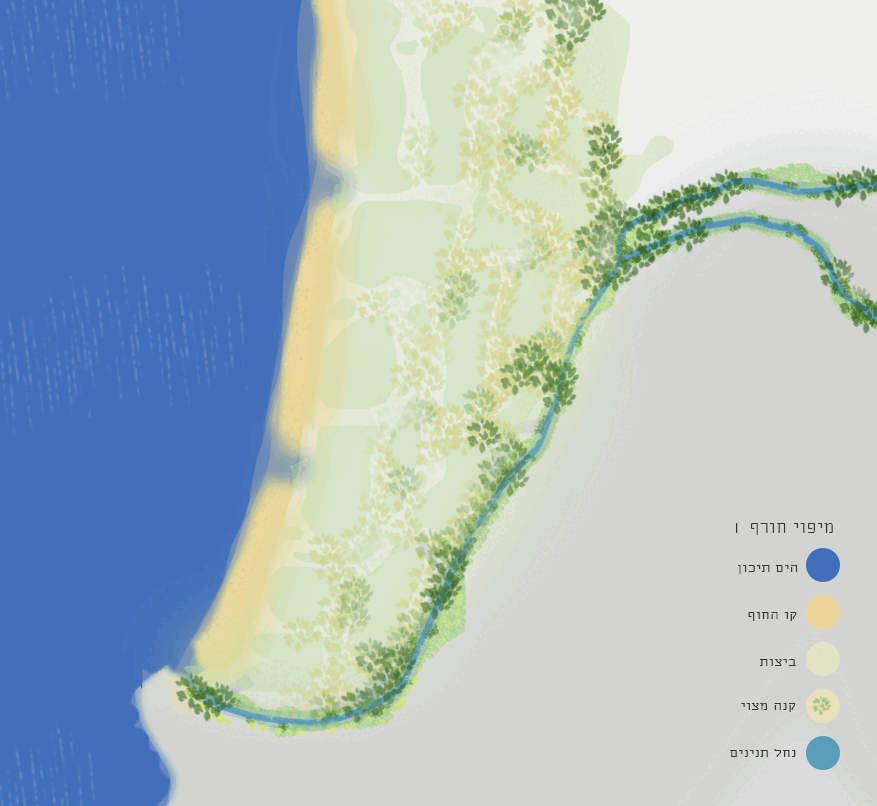
A perennial plant from the Poaceae family (commonly known as grasses).
to the Common Reed from the Yarkon River
Often found in large clusters, the common reed has tall stalks and is very widespread. Able to survive in a wide variety of habitats, the reed spreads rapidly using its long roots and wind-blown seeds.
During the climate crisis, the sea level rose and the number of extremely hot days increased. The growing volume of saltwater endangered the reeds, and the extreme temperatures caused fires.
To survive, the reeds had to adapt to the new conditions. This resulted in two new species of reed. The first, the salty reed, developed the ability to desalinate water by filtering it through its pores and secreting the salt onto its leaves, which became white as a result.
The second, the charcoal reed, emerged from the charred soil in areas hit by many wildfires. This species uses the same filtration system as the salty reed, secreting burnt plant matter waste through pores on its leaves. The new species of reed are spreading through Taninim Stream and changing the landscape.
Noy Dabull, Eden Frenkel







